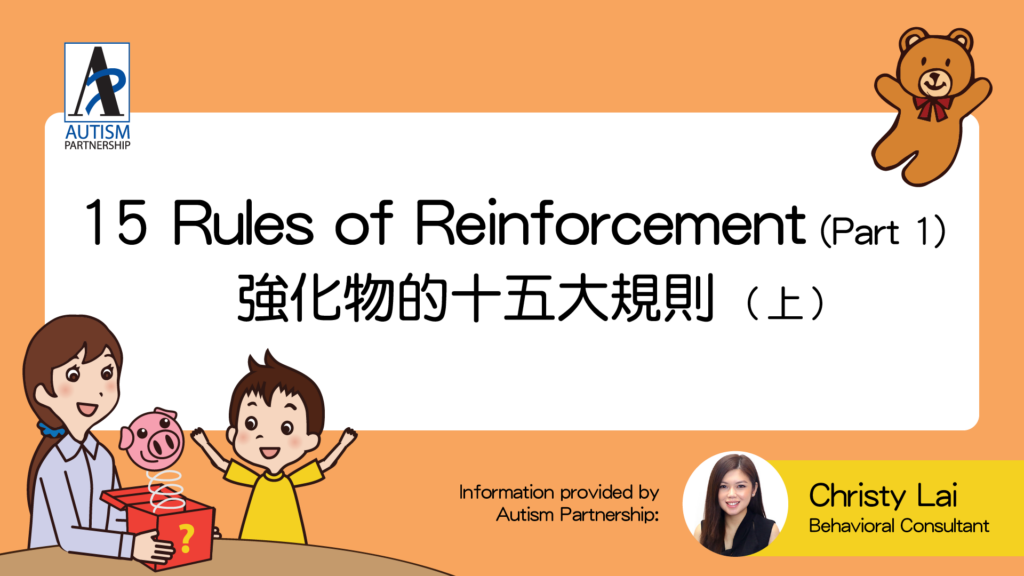
When we work with children with Autism Spectrum Disorder (ASD), compliance and attention are some of the common problems that therapists and parents always encounter. In order to have an effective training process, it is important to have some powerful reinforcers ready before we start our practice. These are some helpful tips to guide you how to choose the right reinforcers.
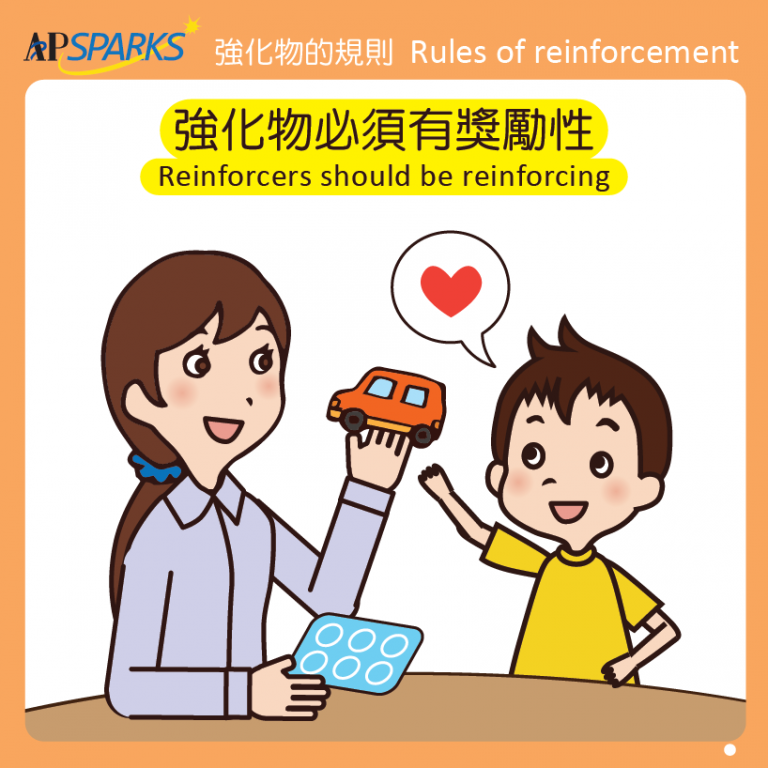
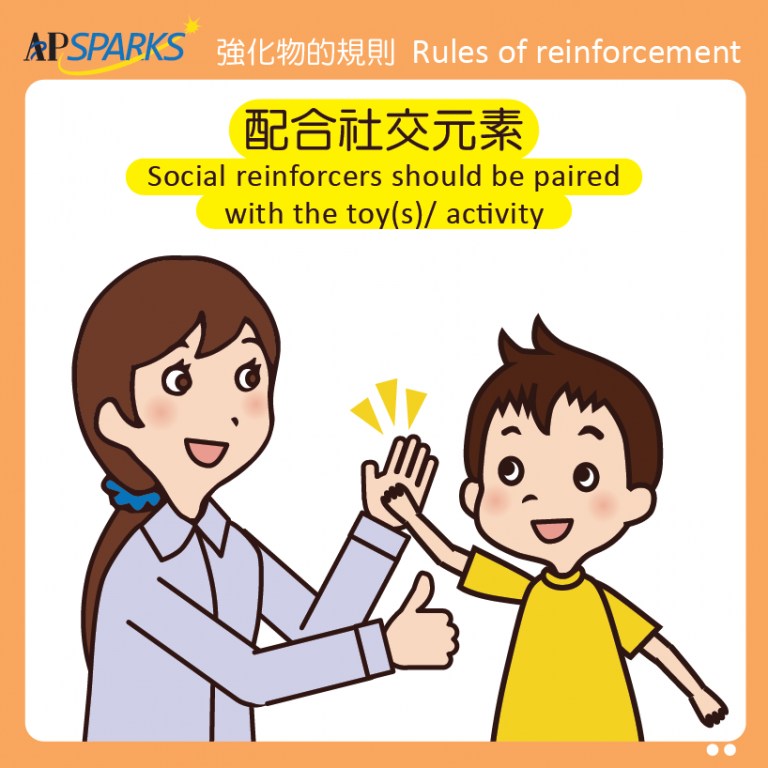
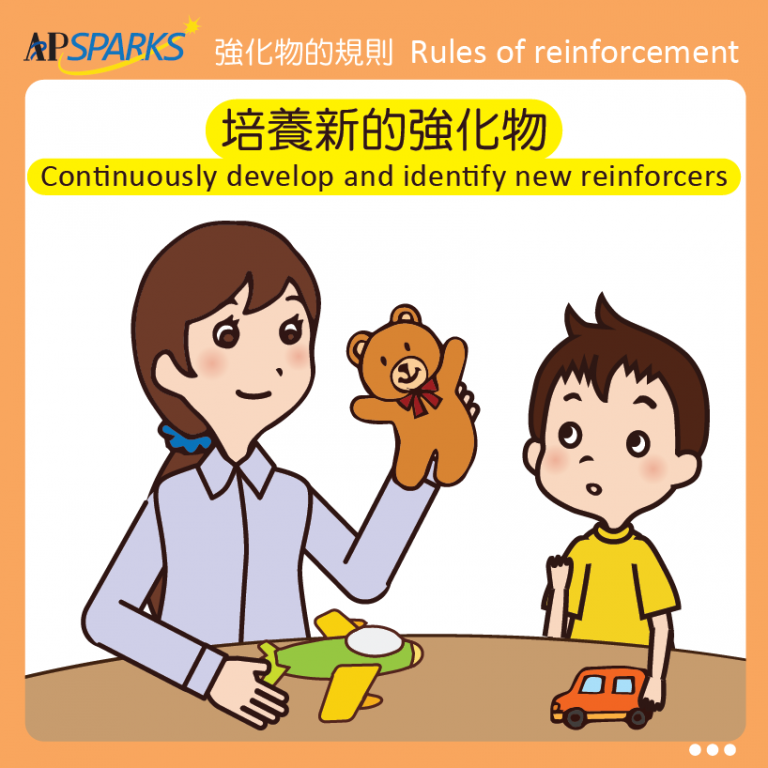
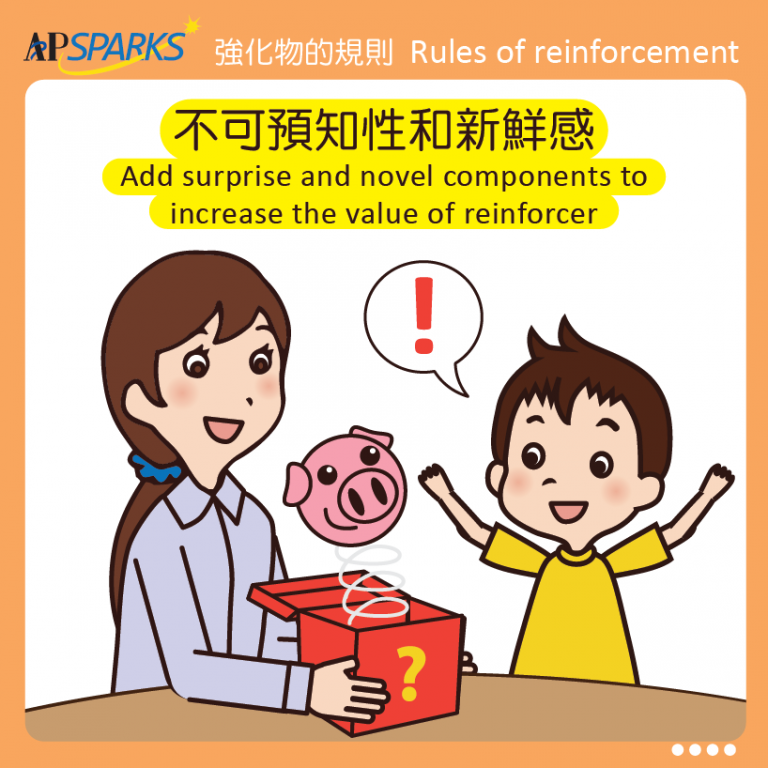
Related Article: Applied Behavior Analysis – 15 rules of reinforcement (Part 2)

It’s natural for parents to compare their child to others, including among those raising a child with ASD. Many parents ask why their child isn’t making the same progress as other children, despite following the same intervention program. While we fully understand these concerns, we strongly recommend that parents avoid comparisons. Each child with autism […]

Parents seeking treatment for their children’s Autism Spectrum Disorder (ASD) are faced with an overwhelming number of treatment options. Cutting through the noise to identify Applied Behavior Analysis (ABA) as the most effective treatment can be a difficult task. Unfortunately, even for the parents who have discovered that ABA has the most supporting research, the […]

When a child is suspected of having an ASD diagnosis, many parents find themselves navigating a sea of information, from ASD assessments to intervention methods, only leaving them feeling more overwhelmed, anxious, and uncertain. As a team of ABA clincians, we understand these challenges and are here to provide a guiding hand. Our mission is […]
Please share to let more people learn about ASD and ABA therapy:
AP holds the belief that with quality Autism Partnership Method (APM) treatment, individuals with autism should reach their fullest potential and achieve the greatest degree of independence and highest quality of life possible.

Sign up now to get ABA and Autism related news delivered to your inbox. Enter your email to get started
Hong Kong Center
Kowloon Center

All information received will always remain confidential. We will contact you as soon as we review your message. Thanks